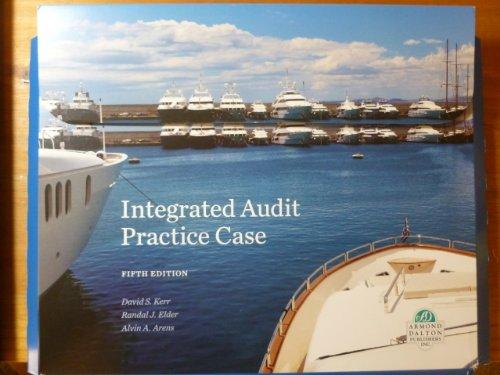Question
List the factors affecting sample size in a PPS sample. When using a systematic sample selection technique with PPS sampling, every account larger than the
List the factors affecting sample size in a PPS sample. When using a systematic sample selection technique with PPS sampling, every account larger than the sampling interval will automatically be included in the sample. Do you agree? Explain. When using PPS sampling, do auditors select sample items based on individual dollars, audit individual dollars, or both? A company has an inventory with a book value of $4,583,231, which includes 116 product lines and a total of 326,432 units. How many items compose this population for purposes of applying a probability-proportional-to-size sampling plan? Explain. When no misstatements are found in a PPS sample, the upper limit on misstatement is equal to zero. Is this statement correct? Explain. A PPS sample with a sampling interval of $2,000 includes an item with an audited value of $90. This value was $30 lower than the accounts book value. Calculate the tainting percentage for this account. The reliability factor table provides factors for as many as three computations when planning and evaluating the results of a PPS sample. Describe in general terms each of these computations. In a probability-proportional-to-size sample with a sampling interval of $20,000, an auditor discovered that a selected account receivable with a recorded amount of $10,000 had an audit amount of $2,000. Calculate the projected misstatement for this one item. Chris York, CPA, is considering the use of probability-proportional-to-size sampling in examining the sales transactions and accounts receivable of Carter Wholesale Company. a. How does the defi nition of the items in an accounts receivable population vary between probability-proportional-to-size sampling and mean-per-unit sampling? b. Should a population of accounts receivable be stratifi ed by dollar value before applying probability-proportional-to-size sampling procedures? Discuss. The auditors of Dunbar Electronics want to limit the risk of material misstatement in the valuation of inventories to 2 percent. They believe that there exists a 50 percent risk that a material misstatement could have bypassed the clients internal control and that the inherent risk of the account is 80 percent. They also believe that the analytical procedures performed to test the assertion have a 40 percent risk of failing to detect a material misstatement. a. Briefly discuss what is meant by audit risk, inherent risk, control risk, and the risk that analytical procedures might fail to detect a material misstatement. b. Calculate the maximum allowable risk of incorrect acceptance for the substantive test of details. c. What level of detection risk is implicit in this problem?
Step by Step Solution
There are 3 Steps involved in it
Step: 1

Get Instant Access to Expert-Tailored Solutions
See step-by-step solutions with expert insights and AI powered tools for academic success
Step: 2

Step: 3

Ace Your Homework with AI
Get the answers you need in no time with our AI-driven, step-by-step assistance
Get Started


